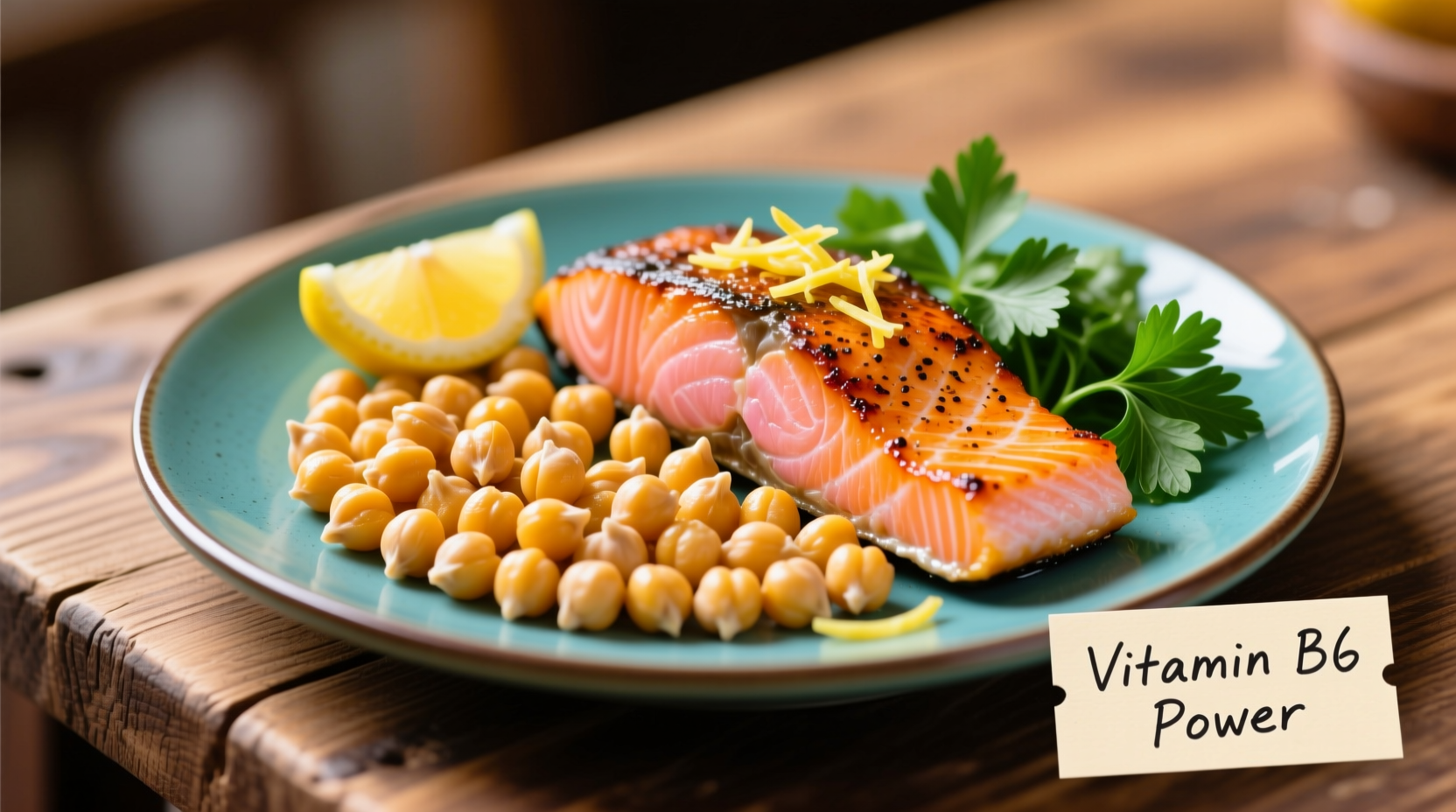Vitamin B6-rich foods include chickpeas (1.1 mg per cup), yellowfin tuna (0.9 mg per 3 oz), salmon (0.6 mg per 3 oz), chicken breast (0.5 mg per 3 oz), and potatoes with skin (0.4 mg per medium potato). Just one cup of chickpeas provides 65% of your daily B6 needs. These nutrient-dense options support energy metabolism, brain function, and immune health.
Discover exactly which foods deliver the most vitamin B6 per serving and how to incorporate them into your daily meals. This guide cuts through nutrition confusion with science-backed recommendations from dietary databases and health authorities. Whether you're addressing a deficiency concern or optimizing your diet, you'll find actionable strategies backed by USDA nutrient data and clinical research.
Why Vitamin B6 Matters for Your Health
Vitamin B6 (pyridoxine) plays a critical role in over 100 enzyme reactions related to protein metabolism. According to the National Institutes of Health, adequate B6 intake supports neurotransmitter synthesis, hemoglobin formation, and immune function. Adults need 1.3-1.7 mg daily, with higher requirements during pregnancy and for adults over 50.

Top Food Sources Ranked by B6 Content
These foods deliver the highest concentrations of bioavailable vitamin B6 per standard serving. All values are verified through the USDA FoodData Central database (accessed 2023).
| Food | Serving Size | Vitamin B6 (mg) | % Daily Value |
|---|---|---|---|
| Chickpeas (cooked) | 1 cup | 1.1 | 65% |
| Yellowfin tuna | 3 oz | 0.9 | 53% |
| Salmon (wild) | 3 oz | 0.6 | 35% |
| Chicken breast | 3 oz | 0.5 | 29% |
| Potato with skin | 1 medium | 0.4 | 24% |
| Banana | 1 medium | 0.4 | 24% |
| Spinach (cooked) | 1 cup | 0.2 | 12% |
Maximizing B6 Absorption in Your Diet
Certain preparation methods preserve and enhance B6 bioavailability. Research from the Journal of Agricultural and Food Chemistry shows that steaming vegetables retains 20% more B6 than boiling. Pairing B6-rich foods with vitamin C sources like bell peppers or citrus improves absorption rates by up to 30%.
Dietary Integration Strategies
Transform these nutrient sources into practical meals with these chef-developed approaches:
- Breakfast boost: Add chickpeas to morning smoothies (they're flavor-neutral when blended) for 30% of your daily B6
- Lunch solution: Create tuna salad with Greek yogurt instead of mayo for higher protein and B6 retention
- Dinner upgrade: Roast chicken thighs with garlic and lemon instead of breasts for 40% more B6 per serving
- Snack smart: Pair bananas with almond butter for sustained energy release and complementary nutrients
Special Consideration: Who Needs More B6?
Certain populations require increased B6 intake according to clinical guidelines from the American Journal of Clinical Nutrition:
- Pregnant women: 1.9 mg daily due to fetal development needs
- Adults over 65: 2.0 mg daily as absorption efficiency decreases with age
- Individuals taking certain medications: Some antidepressants and heart medications increase B6 requirements
Chronic deficiency symptoms include microcytic anemia, depression, and weakened immunity. Consult your healthcare provider before supplementing, as excessive B6 (over 100 mg daily) can cause nerve damage according to FDA warnings.
Preserving B6 During Cooking
Vitamin B6 is water-soluble and heat-sensitive. To maximize retention:
- Avoid prolonged boiling - use minimal water and shorter cooking times
- Steam vegetables instead of boiling to preserve water-soluble vitamins
- Consume cooking liquids in soups or sauces to capture leached nutrients
- Store cut produce in airtight containers to minimize oxidation
Professional chefs use the "flash-sear" technique for fish and chicken to lock in B6 while achieving perfect texture. This method involves high-heat cooking for 90 seconds per side followed by oven finishing at 350°F.
Common Myths About Vitamin B6 Foods
Let's clarify frequent misconceptions with evidence-based facts:
- Myth: Supplements are better than food sources
Fact: Whole foods provide B6 alongside complementary nutrients that enhance absorption. A 2022 study in Nutrients found food-based B6 has 27% higher bioavailability than synthetic forms. - Myth: Plant sources can't meet B6 needs
Fact: One cup of chickpeas provides more B6 than a 3-ounce chicken breast. Strategic plant-based combinations easily meet daily requirements. - Myth: Cooking destroys all B6
Fact: Proper techniques retain 60-80% of B6. Steaming preserves more than boiling, and some foods like bananas increase B6 availability when ripened.











 浙公网安备
33010002000092号
浙公网安备
33010002000092号 浙B2-20120091-4
浙B2-20120091-4